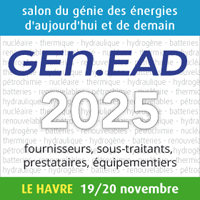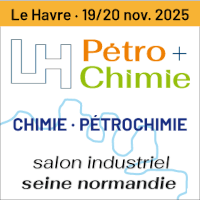sept.
09
2009 | GE Hitachi Nuclear Energy Leads With World’s Most Advanced Nuclear Reactor
GE Hitachi Nuclear Energy (GEH) today announced it has achieved a key milestone in deploying the world’s most advanced nuclear reactor design.
GEH has completed its submittal of the design certification document for the Economic Simplified Boiling Water Reactor (ESBWR) to the U.S. Nuclear Regulatory Commission (NRC). With the submittal, GEH has provided detailed information for the NRC to proceed with evaluating the ESBWR design for certification.
The new reactor design offers advanced safety features and cost-saving advantages that are key in delivering the next generation of nuclear reactors worldwide.
Certification of GEH’s Generation III+ reactor design could help spearhead the deployment of next-generation nuclear reactors around the globe. Nuclear power can help meet rising energy demand and address climate change through its near-zero carbon emissions.
“As the United States debates energy policy, nuclear power should play a pivotal role, as nuclear generates virtually carbon-free electricity,” said Jack Fuller, GEH’s president and CEO. “Supportive government policy is the key to drive the adoption of cleaner energy standards that can light the path to a brighter energy future and reliable energy production.”
GEH believes the ESBWR’s features make it the most advanced reactor design in the world, including passive safety systems, a further simplified design and even higher safety margins than the already safe, deployed U.S. fleet.
Detroit Edison of Michigan and Dominion Energy of Virginia have submitted NRC license applications referencing the ESBWR. NuStart Energy, a U.S. Department of Energy-supported consortium of U.S. utilities, has selected the ESBWR to receive engineering, licensing and commercialization support through the NP 2010 Program.
By submitting a revised design certification document for the 1,520-MWe ESBWR on Aug. 31, GEH’s goal is to have the most complete portfolio of nuclear reactors certified by the NRC. Data from the NRC’s review will support GEH’s future project opportunities in Europe and other regions.
GEH’s portfolio of nuclear reactors also includes the Advanced Boiling Water Reactor (ABWR), the world’s only Generation III reactor that has been certified in the United States and that has successful construction and operational experience. Four ABWRs are operating in Japan, and the global nuclear alliance of GE and Hitachi is building four more in Japan and Taiwan today.
The NRC certified GEH’s 1,350-MWe ABWR in 1997, and GEH has notified the NRC it intends to renew the ABWR design certification for an additional 15 years beyond 2012.
In the next era of U.S. nuclear plant construction, GEH will continue to apply advanced, modular construction techniques perfected by its global nuclear alliance during decades of uninterrupted plant construction in Asia.
GEH is pursuing global deployment opportunities with both the ESBWR and ABWR. In India, GEH has signed a memorandum of understanding (MOU) covering resources in manufacturing and construction management for a potential multiple-unit project. The MOU is with the Nuclear Power Corporation of India, the country’s only nuclear utility, which operates 17 reactors.
ABWR and ESBWR reactors, compared to typical U.S. electricity production, would avoid the annual emission of 6.7 million tons of CO2, equivalent to the annual emissions of about 1.3 million cars.
The ABWR and ESBWR technologies are expected to have, respectively, up to 34 and 40 percent lower operating and maintenance costs per-kilowatt-hour than currently operating Generation I and II nuclear reactors in the United States. This is primarily because of their increased generating capacity, as well as increased capacity factor and systems simplifications.
Both the ESBWR and the ABWR reactor designs have earned recognition as GE ecomagination products. Ecomagination is GE’s corporate-wide initiative to aggressively bring to market new technologies that will help customers meet pressing operational and environmental challenges.
Source : Communiqué GE
Voir la fiche de l'entreprise GE
| |
|
|






  
|